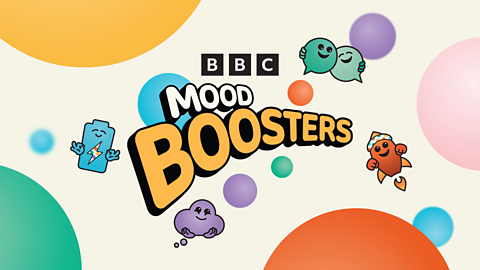Rhys:
Hi there, I'm Rhys and this is Joe.
Joe:
Hello, that's me. I'm Joe.
Rhys:
Woah, Joe are you okay?
You don't seem quite yourself.
Joe:
You know what Rhys I'm not quite right today. I feel a bit moody.
Rhys:
You know I reckon I can help you with that.Do you want to try something with me that might make you feel happy?
Joe:
Yeah, I'm up for that. Yeah.
Rhys:
Great. We're going to make our bodies do silly things and we just have to try not to laugh.
Sometimes when we feel a bit moody or fed up, having fun with our bodies can make us feel happier.
But before we get started we need to give our bodies a good shake to try and wake it up a bit.
Joe:
Oh, yeah. Alright let's shake away the moodiness everyone.
Shake your arms, shake your legs, shake everything you've got.
Rhys:
Nice, okay.
Sometimes we need to move our bodies.
It helps get our big feelings under control.
Joe:
Okay, I think it's time.
I think I'm ready to recharge.
I'm sure I won't laugh though.
I'm ready.
I'm still feeling a little bit annoyed.
But I do want to change how I feel.
Rhys:
Alright, well let's see if I can change that.
Right everyone, partner up and face each other.
And one of you copy me and see if you can make your partner laugh.
Then we'll all switch places and have a go at making the other person laugh.
Ready?
Joe:
Yes, make sure you're ready. Here we go.
Rhys:
This is my impression of a jellyfish learning to walk.
Joe:
It's an alright jellyfish that.
I'm sure you're doing better than Rhys.
Are you laughing? I'm not laughing if you are laughing.
Okay, yeah. That was a laugh.
He was a sleepy jellyfish.
You got me, you got me.
I did feel a little bit moody but now I'm having fun.
Now, did you make your partner laugh?
Right, I think it's time we swap over.
Swap over everyone.
And copy me.
Rhys:
You're not going to make me laugh.
Joe:
I'll make you laugh. Watch your partner see if they laugh.
I am a cheese melting in the sun.
See I'm fine now but the sun is so hot! I'm Brie! Oh, I'm Cheddar.
The cheddars gone, where's my cracker?
Oh, it's so hot out here.
Rhys:
Okay enough, I can't not laugh at melting cheese. It's too good, it's too good.
Joe:
Can we do one more?
Rhys:
Okay sure, we've got time for one more.
Okay everyone, so swap over.
Follow me this time, try and make your partner laugh.
This is a flamingo playing limbo.
Joe:
Okay.
And I will try my best not to laugh here at Rhys.
Hopefully you're doing just as good, if not better. Is your partner laughing?
At the back, hm?
Probably funnier than Rhys.
You've got balance. You've really got good balance.
I've laughed, okay. He's out.
Rhys:
Nice, before I actually fall over.
Joe would you say that recharge has helped you a bit?
Joe:
Yes, the limbo flamingo definitely.
I felt a bit annoyed but now I'm a lot more happy.
And this has helped me control and shrink my big feelings.
Rhys:
I like that, let's say that together.v"I can shrink big feelings."
Rhys:
"I can shrink big feelings."
Joe:
"I can shrink big feelings."
Joe:
Thanks very much everyone. You helped me to feel happier too.
Rhys:
Yes and now that you guys are recharged you're ready for anything. So, have a great day and we'll see you very soon.
Bye!
Joe:
See you!
CBBC presenters Rhys Stephenson and Joe Tasker lead this interactive activity that encourages children to work in pairs and copy a series of silly moves intended to make their partners laugh.
This classroom activity encourages playfulness and fun, helping the children to shift their feelings from potentially being annoyed or sad to being calm and happy.
The video can be used to remind pupils that we can control and change both our own and others’ negative emotions through simple (and sometimes funny) movements.
Taking time out can help us to stay healthy and well.
Teacher Notes
Teachers can use this activity to help pupils recognise when they need to slow down, or take some time to stop, to help them to feel calm. It's important to listen to what our bodies are telling us through how we are feeling.
We advise teachers and parents to review the Moodboosters video prior to showing it to children at school or home, and consider the activity’s suitability for space, accessibility requirements and how it may be received by pupils.
Teachers should ensure that the learning environment is safe and supportive for all pupils during viewing, especially when they are asked to share ideas, feelings and emotions.
Visit the Teacher Guide for more information and support.
Curriculum Notes
Moodboosters classroom resources can be used for teaching primary school pupils aged 5 -11 PSHE in England, Health and Wellbeing in Wales and Scotland, and PDMU in Northern Ireland, and to support with Ofsted, Estyn and Education Scotland requirements.

More from Recharge:
Self-Belief Warriors. video
Dr Ranj Singh leads pupils through a series of strong and empowering poses, helping to create positive mindsets and develop feelings of self-worth.
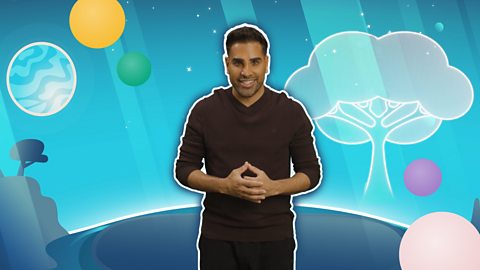
A Moment in Nature. video
TV Presenter Rhys Stephenson encourages primary school pupils to employ all of their senses to enable them to deal with the day ahead.

Jungle Stretch. video
CBeebies presenter Evie Pickerill uses slow, still and dynamic movements to encourage flexibility and mindfulness in children.

Breathe and Be. video
TV presenter and Strictly Come Dancing champion Oti Mabuse inspires pupils to explore breathwork and movement in this classroom activity.
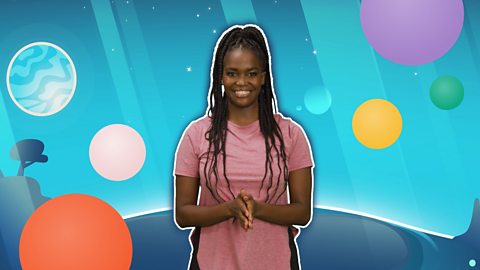
Take It Slow. video
Strictly Come Dancing’s Amy Dowden mimics a sloth and combines imagination and yoga-inspired poses to help children relax.
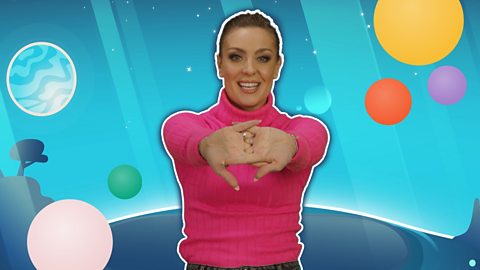
Power Off. video
Dr Ranj Singh slows things down and gets pupils to be present and recognise when they're tense to help them feel calmer and more focused.

Meditation Station - Feeling Thankful. video
Ade Adepitan introduces techniques to teach children how to control their breathing to regulate feelings and emotions.
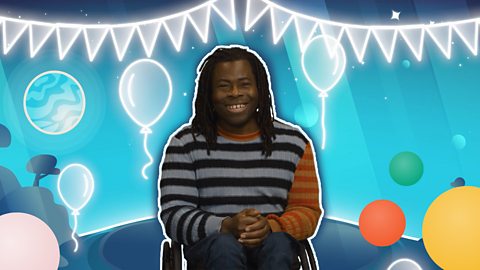
Balance and Be. video
Olympian Bethany Shriever guides children using visualisation techniques to experiment how changing thoughts can affect our balance, mentally and physically.
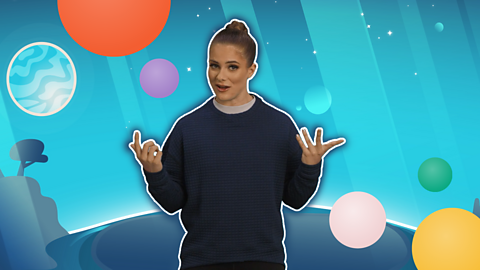
Pirouette to Peace. video
Evie Pickerill and Oti Mabuse teach some basic ballet moves that encourage primary school children to slow down, pause and take a break.
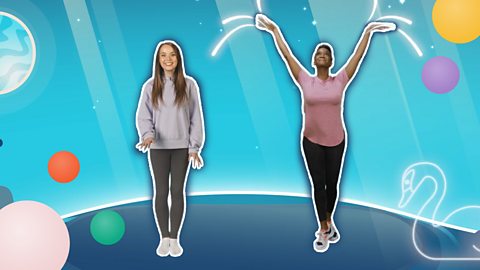

More from Moodboosters:
Boost. collection
Energetic, movement-based activities promoting self-confidence in children by encouraging them to use movement and positive thinking to build self-esteem.

Connect. collection
Fun, movement-based activities for children centring on relationships and how to recognise emotions in others through empathy.

Imagine. collection
Learning activities to promote creativity and optimism in children whilst encouraging them to use their imagination to envision their goals and aspirations.

Teacher's guide
Curriculum-linked ideas and tips about how you can use Moodboosters with your class during the school day.
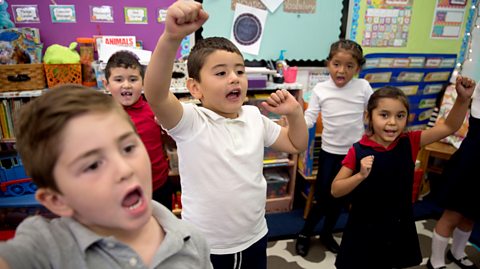
Watch again - our live launch. video
Watch highlights as children from around the nations join together for a big mood-boosting moment.
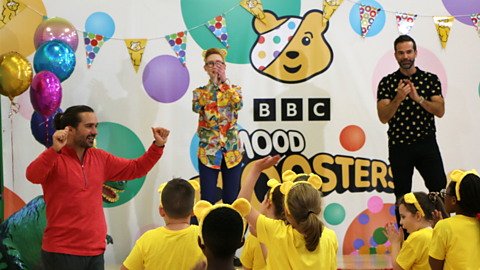
About Moodboosters
Everything you need to know about our initiative to get KS1 / KS2 pupils moving for mental health and wellbeing.
